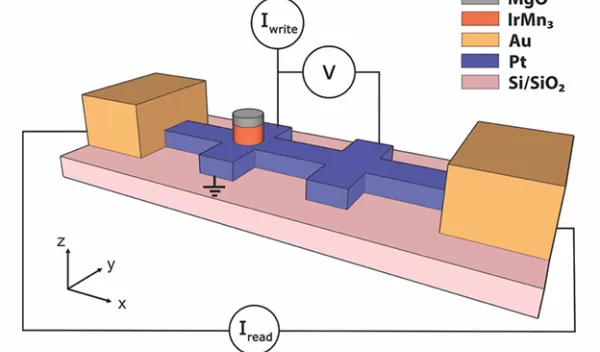
A more robust memory device for artificial intelligence systems
A research team at Northwestern University and the University of Messina in Italy has developed a new magnetic memory device that could lead to faster, more robust artificial intelligence systems. Composed of antiferromagnetic materials, the memory technology is immune to external magnetic fields and could one day improve a variety of computing systems, including AI hardware, cryptocurrency mining and space exploration programs.
A paper outlining the work was published in Nature Communications.
Pedram Khalili, an electrical and computer engineer at Northwestern University's McCormick School of Engineering, led the U.S. National Science Foundation-funded study. "The research promises antiferromagnets based on magnetic memory storage that are more reliable with much greater densities," said Usha Varshney, a program director in NSF's Directorate for Engineering.
AI applications, from digital voice recognition platforms such as Siri to medical image processing in healthcare to interactive content platforms like Netflix, are using increasingly larger datasets to perform, rendering today's existing memory hardware technology inefficient and unsustainable.
"Antiferromagnetic materials could solve the challenges of ferromagnetic MRAM," Khalili said. "Antiferromagnets show the potential for scalability, high write speed, and immunity to tampering by external magnetic fields -- all necessary components to make faster devices to support the rapid growth of the computing, networking and data storage industries."
The new work expands on a previous study in which the research team first demonstrated the electrical writing of information in a silicon-compatible antiferromagnetic (AFM) memory device. The device, composed of platinum manganese, was significantly smaller than previous AFM-based devices and operated with record-low electrical current. The device was also the first AFM memory device compatible with existing semiconductor manufacturing practices.
"This was a key milestone, as we demonstrated no new capital expenditure needed by companies that would want to adopt antiferromagnetic MRAM technology," Khalili said. "However, we felt we could make improvements and address several important shortcomings and unanswered questions about the physics of the device."


